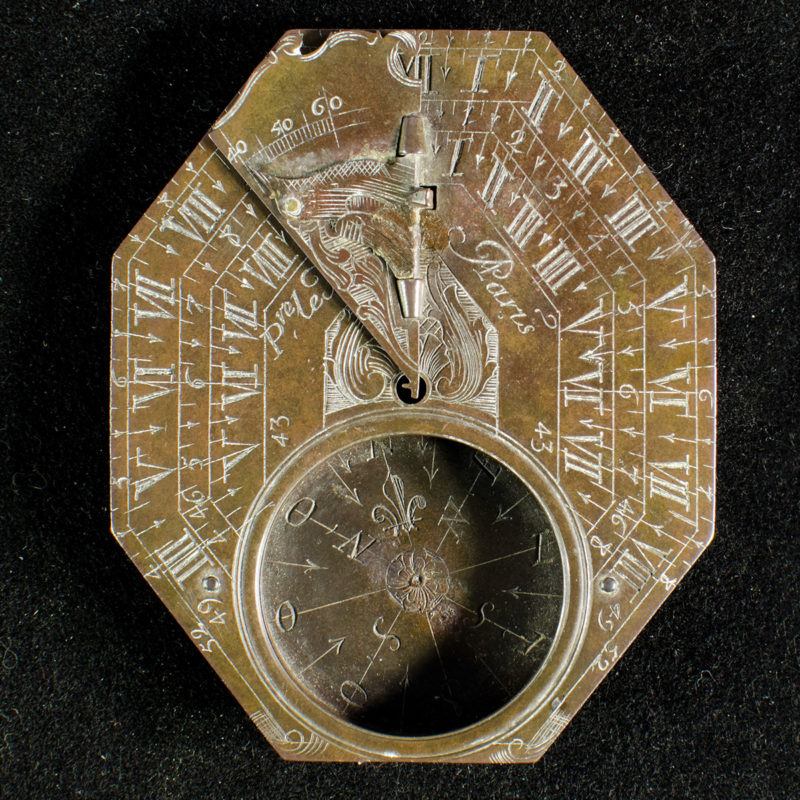The Le Maire sundial compass was the mid-18th century equivalent to today’s GPS. It was found near Green Bay in 1902 by a local antiquities collector, Frank Duchateau, and recalls a time when Wisconsin was part of New France.
French mariners and explorers using the Le Maire Sundial Compass depended on both their own specialized navigational expertise and maps produced by French cartographers. Many such maps were created based on explorer accounts of the waterways stretching from the Atlantic Ocean to the Mississippi River. Devices like the sundial compass were given to French officers who along with fur traders, Jesuit priests, and other settlers began arriving in the Upper Great Lakes in the mid-1600s.
It took some time for the French to establish a base in what is now Wisconsin but historical sources confirm the presence of a fort at Green Bay at the mouth of the Fox River by 1717. This fort under French occupation was variously called Fort St. François and Fort La Baye. Its location near the confluence of the Fox River and Green Bay was a strategic choice to control trade between the Great Lakes and the Mississippi River. That Green Bay was known back in France is evidenced by the compass’s reverse, which lists the names and latitudes of fifteen French forts and trading posts in North America.
The fort in Green Bay, or La Baye, as it was known at the time, was considered the most difficult to maintain and control due to its distance from the heart of New France in Montreal. Even so, by the 1750s, the fort’s population had reached approximately 200, including both French and Métis (mixed native and European) families.
In 1760, after nearly a decade of war, the English finally managed to seize control of New France and its fur trade.
Centuries later, Frank Duchateau was searching for artifacts near Red Banks, along the southeast shoreline of Green Bay, when he pulled a peculiar octagonal object from the ground. Immediately, he noticed the object was covered with French inscriptions. Duchateau was an avid artifacts collector. In 1927, he donated more than 12,000 objects, including this sundial compass, to the Neville Public Museum.
This story was produced in partnership with Wisconsin 101, a collaborative effort to share Wisconsin’s story in objects.










